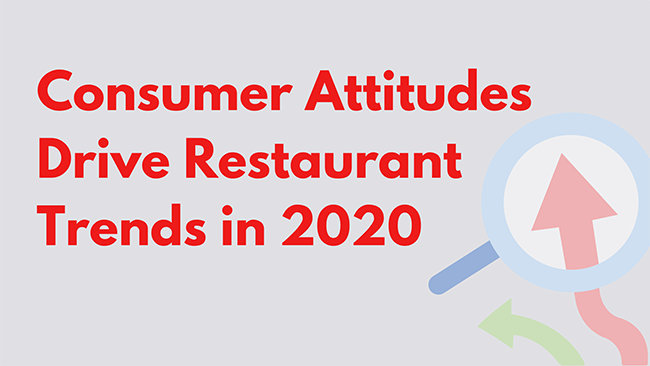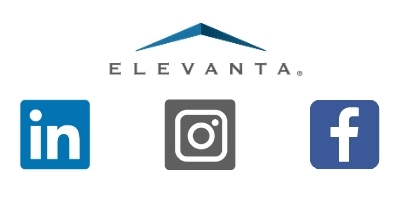Consumer Attitudes Drive Restaurant Trends in 2020
When 2020 began, many restaurant brands had their sights set on growth. Several planned on diving deeper into emerging technologies such as kiosk ordering, mobile apps and loyalty programs. But no one expected the instantaneous switch that occurred in operations across the service industry when the COVID-19 pandemic struck.
Ultimately, consumer attitudes are the driving forces of restaurant trends. Whereas quality or speed might have once been the focus to please customers, now their concerns lie in other places like safety, cleanliness and convenience. These shifts in attitudes have restaurant operators across the industry taking a hard look at every component of their business.
Evolutionist Charles Darwin provided insight on change when he was researching the adaptation of species in nature. “It is not the strongest of the species that survives, nor the most intelligent,” Darwin said. “It is the one that is most adaptable to change.”
This idea can be applied to businesses in today’s environment as well. What attitude trends are emerging in the restaurant industry that operators should consider?
YouGov and Seven Rooms created four different segmentation groups, or “diner personas,” of customers in the COVID era using data they collected in a recent study: the pickup patron, the safety-savvy consumer, the tech-conscious contactless diner and the carefree guest. These names alone give you a brief description of what is important to consumers when visiting restaurants.
Less Is More Efficient
To lower costs and achieve better economies of scale, restaurants are removing expensive or unpopular menu items. This helps streamline operations and avoid increasing menu prices if possible. IHOP is a great example, recently condensing its 12-page menu into just two pages. The brand kept popular items that were simpler to prepare and nixed more complicated items that were ordered by fewer guests and could be easily replaced. Chief Marketing Officer Brad Haley said he “doesn’t see the chain going back to the full 12-page menu.”
This belief is not exclusive to Haley and IHOP, however. Recent research from Datassential shows that four out of 10 casual-dining operators expect to offer fewer items going forward, even beyond COVID.
With the increased amount of off-premise ordering, operators have also realized that some items are not optimal for being taken home, lowering the customer experience. To ensure that the meal is fresh when it’s delivered or after the customer gets home from a pickup trip, limiting menu items to ones that are optimized for transport is a step many operators are taking. A shorter, more streamlined menu is also easier for customers to peruse on their devices – as many restaurants are using QR codes and mobile menus to prevent the spread of germs.
Moving Toward Mobile
Consumers have a variety of preferences when it comes to what platform they are placing orders on – the restaurant’s website, a mobile app or a third-party service, but it has been proven that they are searching the web to find what to eat.
Toast found that 35% of guests are discovering restaurants through online reviews on platforms like Google Reviews, Yelp or Trip Advisor, and roughly the same number of guests go to a restaurant’s website to browse the menu and order. It is important for operators to make sure that their presence on these platforms is strong so they can remain on customers’ radars.
Development of Drive-Thru
Restaurant brands have been seeing a steady increase in drive-thru customers over the past few years. But when pandemic-related regulations closed dining rooms in most states, customers had no choice but to use the drive-thru when dining out, sending drive-thru orders soaring by 26% in April, May and June, according to data from the NPD Group.
Recently, many brands, including Shake Shack, Taco Bell, Starbucks and Burger King, have announced new future store layouts that reduce emphasis on the dine-in experience and focus on drive-thru and mobile orders. This proves that restaurant operators know that these trends will last far beyond 2020.
In a recent interview with QSR Web, Taco Bell COO Mike Grams discussed the chain’s reasoning behind its new ‘Go Mobile’ design, which features a double drive-thru lane and designated curbside pick-up spots. “When a customer is driving down the street and they want to go to Taco Bell, or any restaurant for that matter, the first thing they do is look at the line,” noted Grams.
Although not all operators plan on building new and improved restaurants just to cater to drive-thru customers, many are changing their operations in existing locations to increase their speed, getting more customers through the line in a short amount of time. Chick-fil-A has been a longtime user of tablet ordering, which allows more order points in the line, increasing speed and efficiency. Customers also see a friendly face (behind a mask, of course) when ordering. Other operators have been adopting this concept amid the COVID pandemic to streamline operations.
As customer outlooks and attitudes evolve, more emerging trends will be likely in the coming months. According to Darwin’s advice, restaurant operators who pay attention to these needs and adapt effectively will not only survive, but also thrive.


